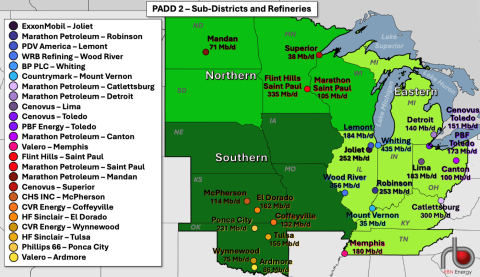Locator: 48499B.
Politics: power of the purse -- Democrats will be spinning their wheels in the US House -- they need three Republican votes for any bill they want to pass (won't happen); then US Senate needs to take up the bill and then pass it (won't happen); and, finally, Trump is buying a boatload of Sharpies from Staples for use when getting ready to veto such bills if they happen to sneak through that legislative process.
Department of Education: the secretary will go through the rules and regulations line by line and will remove them if not explicitly written into US law. Trump 1.0 learned a lot about how to do this right.
Wow: this is the Dems' biggest problem --
Democratic US House leader Jeffries is an Obama dobblegänger in speaking, looks, mannerisms, and politics. If you haven't seen this, watch Jeffries' daily briefing on FOX Live Now streaming every day about 11:00 a.m. CT.
Sanctuary cities: Trump is doing a great job working the "sanctuary city" issue.
The one thing he could be doing: "incentivize" criminals to move to sanctuary cities. Advertise at bus stations, railroad stations. Even offer free transportation (rail, bus) to "sanctuary cities."
GDPNow, link here:
ISO-NE:
My favorite chart, link here:
AMZN: earnings.
AMZN: some folks were making a big deal about market's response after earnings call --
BABA, link here:
*************************************
Back to the Bakken
WTI: $71.13.
New wells:
- Sunday, February 9, 2025: 12 for the month, 58 for the quarter, 58 for the year,
- 22204, conf, BR, Manchester 24-9MBH,
- Saturday, February 8, 2025: 11 for the month, 57 for the quarter, 57 for the year,
- 40427, conf, Grayson Mill, Alfred North 17-15 2H,
- 38359, conf, Petro-Hunt, Sherven Trust 153-95-27A-26-1HS,
- the Charlson oil field is tracked here but has not been updated in a long time.
- map here;
- 36622, conf, BR, West Kellogg 2A-UTFH,
- Friday, February 7, 2025: 8 for the month, 54 for the quarter, 54 for the year,
- 40438, conf, Enerplus, Strength 150-94-06B-18H,
RBN Energy: how would Midwest refiners deal with a 10% tariff on Canadian crude?
The looming threat of a 10% tariff on U.S. imports of Canadian crude oil hasn’t just angered Canadians — and understandably so, we might add. It’s also put a spotlight on PADD 2 — the Midwest/Great Plains region — whose pipelines transport the vast majority of Canadian exports and whose 25 refineries (combined capacity 4.3 MMb/d) are, in many cases, significant consumers of heavy and light crudes from up north. Put simply, to assess the impacts of the still-possible trade war on U.S. refiners and producers on both sides of the border, you need to understand PADD 2’s crude oil supply/demand balance and the options Midwestern refineries that currently run Canadian crude would have if a tariff were put in place. In today’s RBN blog, we’ll discuss these dynamics.
The monthlong truce between President Trump and Prime Minister Trudeau is just that: an agreement to pause a possible trade war for a few weeks to give both sides an opportunity to come to a longer-term meeting of the minds. Trump has famously said that “tariff” is his favorite word, so assuming a 10% levy on imports of Canadian crude is off the table would be a mistake. All bets are still off, and even if things are settled once and for all, Canadians might reasonably ask, “Why the heck would the U.S. turn on its best friend like that?”
Figure 1. PADD 2 Sub-Districts and Refineries. Source: RBN
Note: Refineries represented by colored dots
The Big Picture
Before we discuss the specifics of how a sampling of PADD 2 refineries might react to a 10% tariff on U.S. imports of Canadian crude oil, we’ll take a quick big-picture look at the region. Stretching from North Dakota to Oklahoma to Ohio, PADD 2 is, first of all, a crude oil production powerhouse (~1.8 MMb/d in recent months), led by the Bakken Shale (~1.2 MMb/d) in the northwestern corner of the PADD’s Northern sub-district (medium-green area in Figure 1 above), the mature Anadarko Basin across Oklahoma in the Southern sub-district (dark-green area), and even burgeoning supplies of condensate (~100 Mb/d) from the Utica play in eastern Ohio, situated near the eastern edge of the Eastern sub-district (light-green area). Additionally, PADD 2 currently receives ~2.5 MMb/d of Canadian imported crude oil — mostly via Enbridge’s massive Mainline system and South Bow’s Keystone Pipeline — but we estimate that about one-fifth of that, or ~500 Mb/d, passes through the Midwest/Great Plains region on its way to refineries and export docks in PADD 3 (Gulf Coast). PADD 2 also receives inflows from the Permian and other production areas in PADD 3 (~750 Mb/d, on average, in the second half of 2024) and the Denver Julesburg (DJ) and other basins in PADD 4 (Rockies; ~930 Mb/d in the second half of 2024), though a good bit of the latter simply flows through PADD 2 (most of it through Cushing) to the Gulf Coast.






